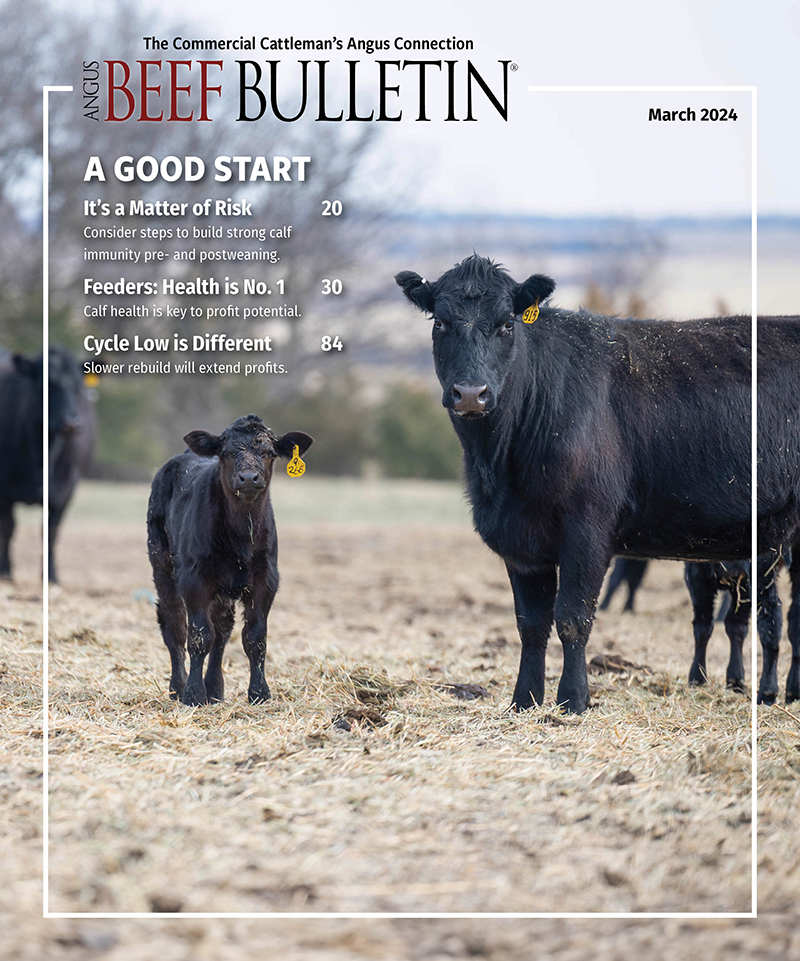
The Link
Find success in opportunities available today.
Cattlemen are famous for finding opportunities in problems. Adversity tends to bring out the best in us. The Marines have an unofficial slogan: “Improvise, adapt and overcome.” The same could be said for the typical rancher. Give us an obstacle, and we will find a way through it. Historically, tough times have led to new ways of doing things, new business models and new solutions.
Ironically, when times are good, there tends to be little impetus for change. We tend to adopt the slogan: “If it isn’t broken, don’t fix it.” The result is we often fail to take advantage of opportunities in the good times, or we don’t fully leverage the opportunities we have.
Unprecedented times
I bring this up because the market experts are all telling us the next three to four years are going to be historic from a price standpoint. There won’t be a lot of incentive to change when calves are bringing $4 per pound (lb.). When things are working, it is not totally illogical to adopt the attitude of keep doing what you’ve been doing — maybe do it a little bit better.
It is relatively easy to invest a little more in nutrition, genetics and marketing when you have positive cash flow. Of course, those are all very positive things to invest in, and they are proven ways to capture more returns. However, they do not tend to change how your operation is positioned in the marketplace. Everyone else is making similar investments, and the industry benefits. But, you are not changing how your operation is positioned, because you are essentially keeping up rather than differentiating yourself.
When we came out of the last liquidation phase, the quality of the genetics of the U.S. beef herd took a quantum leap forward. As we go into the next expansion phase, we can expect similar results. As we build back better, the nation’s cow herd will be vastly improved, in part because we will have turned generations over more quickly, replacing the poorer performers with better genetics. The rate of genetic progress is unprecedented. It is accelerating at such a pace that most cattlemen will be more concerned about keeping up than leap-frogging the competition.
Value of known genetics
Genetics are an easy solution; we tend to be pretty comfortable in knowing what our targets are and realize what it takes to remain competitive. While most people focus on the marketing benefits of the Genetic Merit ScorecardSM (GMS), and the benefits of characterizing the cattle, one of the benefits we don’t talk about enough is that it is probably the best benchmarking tool we have. It not only shows you if you are making progress over time, but it also lets you know how you are doing compared to the industry as a whole.
The more difficult area to tackle is in the area of marketing. We have a pretty good infrastructure in place, and we tend to focus on responding to the market signals from an efficient marketing system. With that said, I truly believe we are seeing a revolution on the marketing side that may be even more significant than what we are seeing on the genetic side.
Because the value of genetics has grown in relation to its effect on profitability, the need to know what those genetics are, and the profits generated by fine-tuning genetics to various systems, has grown as well. The result is that the industry is redefining the way we look at supply chains and the role they play in marketing. Genetic information has never been more important, and that is why the Genetic Merit ScorecardSM is leading a revolution in feeder-calf marketing similar to what expected progeny differences (EPDs) did in the purebred segment.
Preparing for these changes will be critical, but we have a window here where we can adopt these programs, like the ones offered through AngusLinkSM, at a time when we have the luxury of higher profits and margins. Surprisingly, despite record prices we are seeing record premiums for AngusLink cattle, as well. Those premiums will continue to grow over time, and there is no better time to begin to prepare for the future than the present.
Editor’s note: Troy Marshall is director of commercial industry relations for the American Angus Association.



